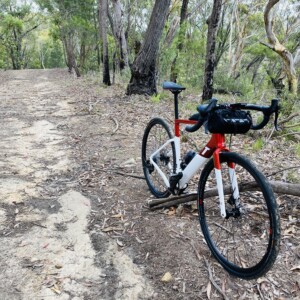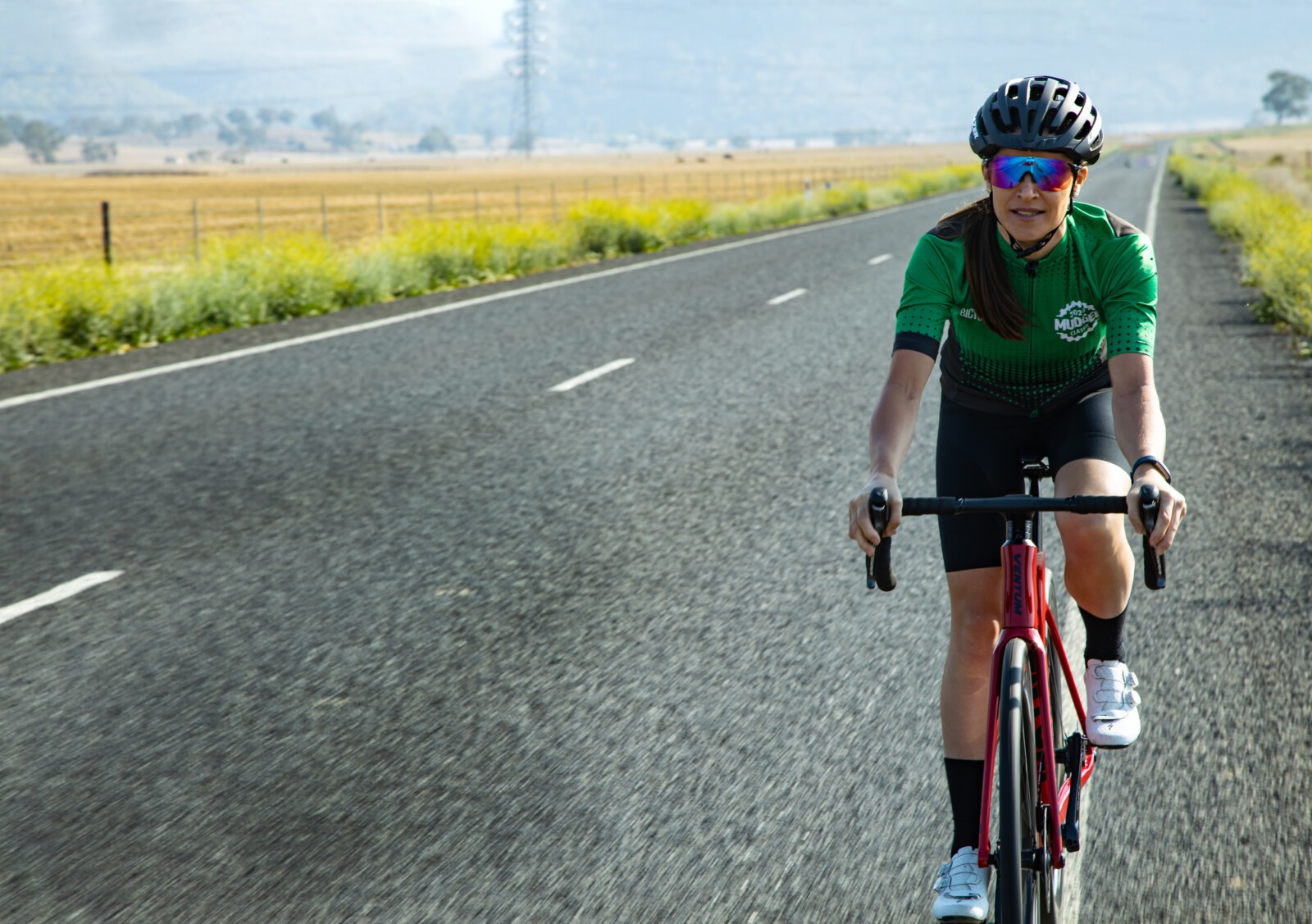
The 170 km Maxi Classic includes the KOM and QOM (King/Queen of the Mountain) which will be contested over the legendary Growee Gulph. The arduous course will take riders on a tour not just through the Mudgee township, but also on the path to Wollar, Bylong Valley and Growee Gulph before coming to an end at Mudgee, after a total 1,686 metres of climbing.
Those who tackle the 120 km Challenge Classic will be taken through rolling hills, paying a visit to Lue and Rylstone before circling back to the start.
Your preferred option will dictate your training requirements, but some principles apply no matter your choice.
The Mudgee Classic is a Gran Fondo, which is an overlap between participatory and competitive cycling. Gran Fondos have become popular in Australia in the past few years because they provide a challenge for many riders without committing to road racing.
It’s a ride rather than a race, but it doesn’t mean you can’t have specific goals around times. And to reach those goals you’ll need to train.
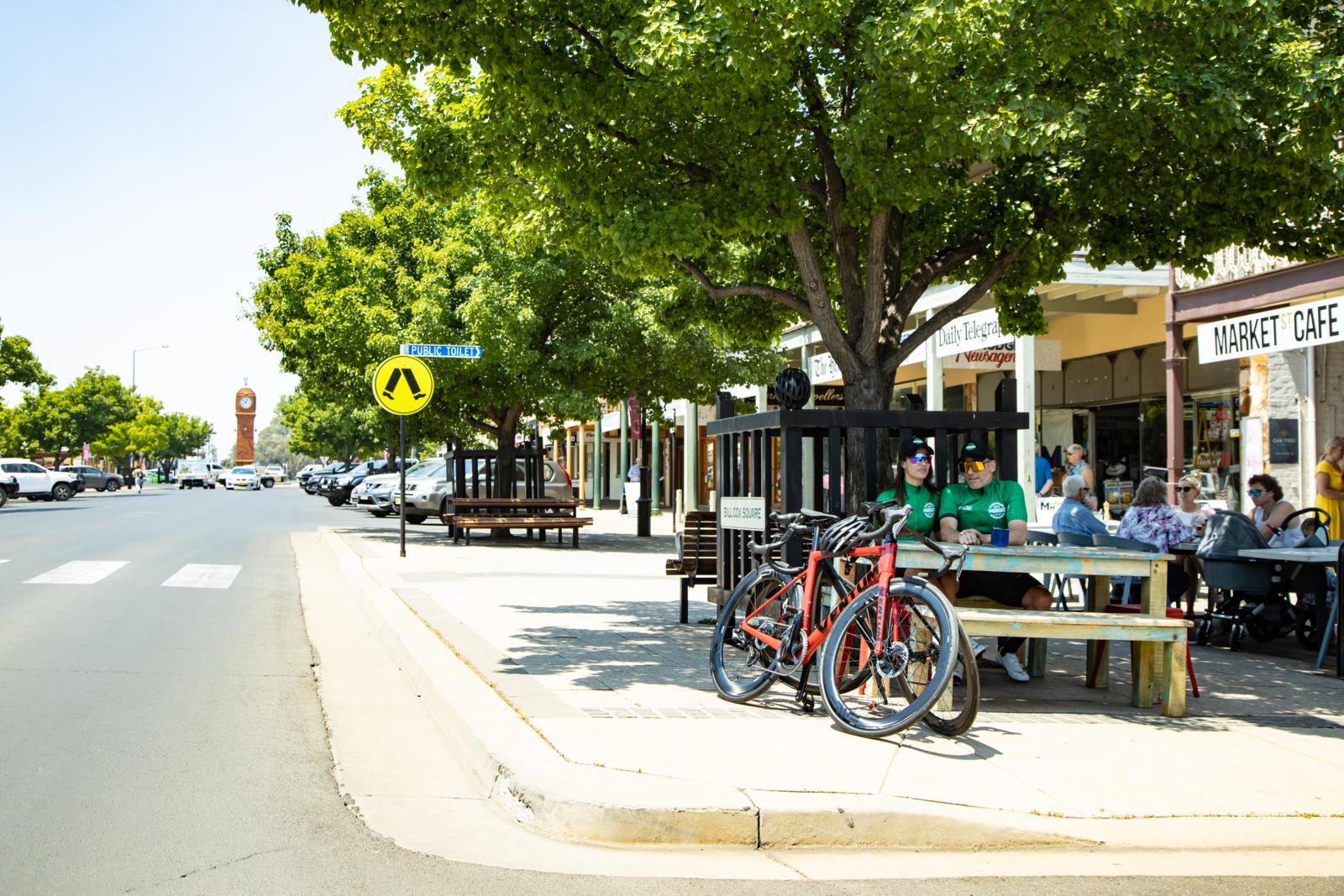
Preparing for The Classic
A great way to ensure you undertake enough training for the 120km or 170km ride is to commit to a training plan. Depending on your level of commitment and your budget you could compile your own plan or even hire a coach.
There are plenty of online training resources that you can adapt and follow using something as simple as an Excel spreadsheet to record the details. There are also many paid online training options where you record all your efforts in a program, like the popular TrainingPeaks, and track your progress using your bike computer and Strava.
…Gran Fondos have become popular in Australia in the past few years, they provide a challenge for many riders without the burdens of road racing…
Start short and increase over time
It’s important to build up the distance and intensity of your rides over time. This is particularly important if you’ve just returned to riding or have never ridden a long-distance ride previously. Don’t head out and ride the full event distance on your first weekend! Instead, build up over time. For example, if you are signed up to ride the 120km Challenge Classic, then start out riding 50km in the first week, 60km, 70km, 80km, 90km, 100km, and so on.
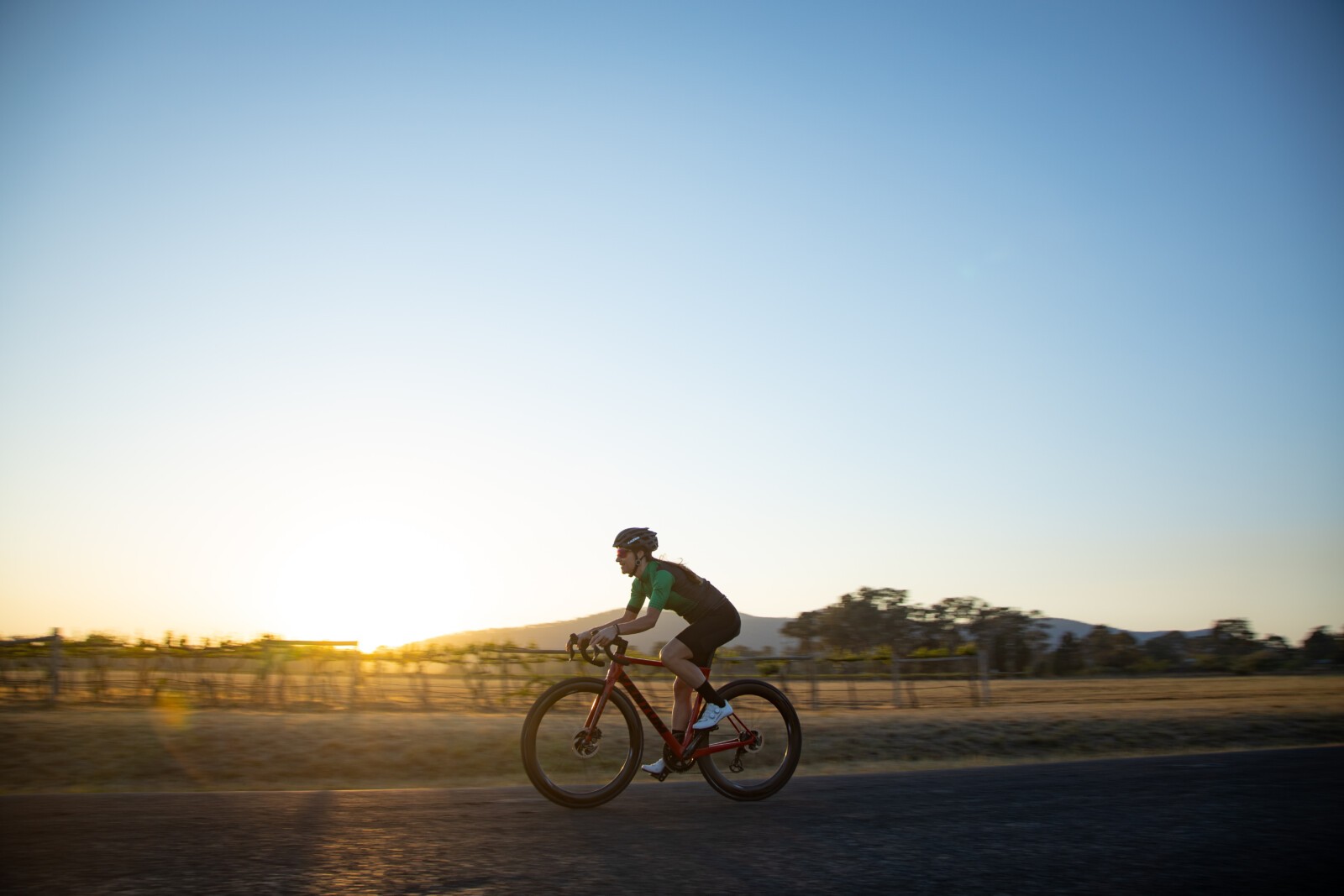
Most experts say you don’t need to ride the full distance of the event in training, as long as you get close, and do it consistently.
You should also include recovery time in your training schedule. Include non-riding recovery days in your training plan and don’t ride every day. Many coaches recommend you make every fourth week a lighter one to allow your body to recover.
As well as rest days from the bike, you should also build in easier rides. Not every outing has to be at 100 per cent effort. Recovery rides are just as important as challenging ones for building overall fitness.
Find a similar course in your local area
There’s no point in doing all your training rides on flat terrain because it’s easier for you. You’ll be completely unprepared on the day ride the undulating country roads.
The Mudgee area is known for its rolling hills, so look for similar terrain in your area. On the Mudgee Classic website (www.cyclingclassics.com.au/mudgee) you’ll find detailed maps and downloadable files for each course so you can fully prepare.
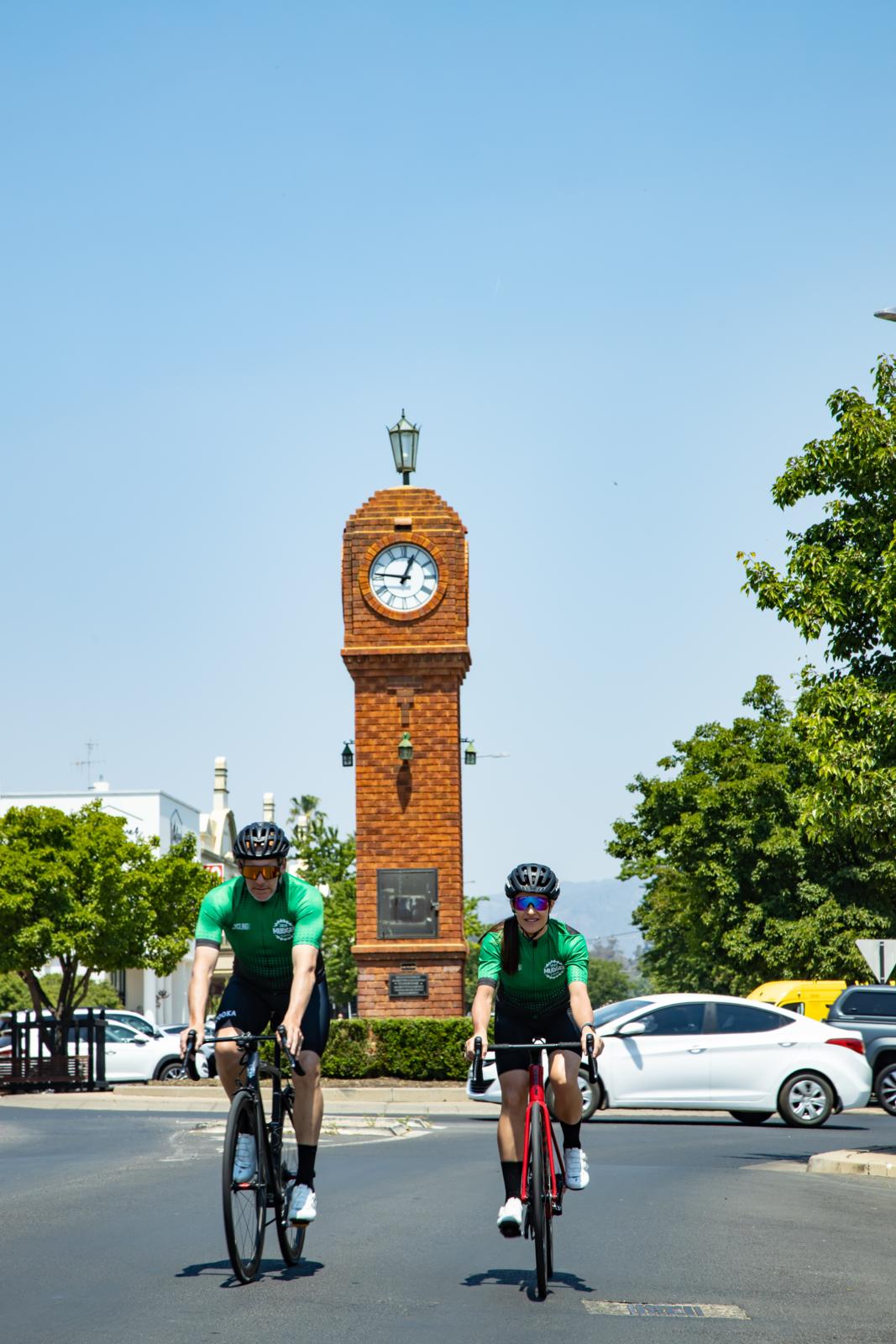
Get plenty of ‘Ks’ in your legs
More experienced riders will tell you that there’s no substitute for riding enough kilometres to prepare you for a long day in the saddle. Unfortunately, there is no magic formula as to how many kilometres you need to ride—but you can’t go wrong if you ride regularly.
As well as riding plenty of distance you need to focus on pedalling efficiently. If you go out hard on a long ride you’ll be fatigued. Opt for a slightly easier gear with a higher cadence versus one that’s lower because the pedals are harder to turn over. Practice this in your training sessions and then follow it on the day of the ride.
The experts also agree that you need to taper before any significant event. In mid-April, a week or two before the start of May, you could back off your training a little. If you’ve done enough training in the weeks leading up, you should be ready and rested before the big day.
Supplement your training indoors
For those days when you can’t get outside, it’s a great idea to have an indoor trainer as an alternative to getting out on the bike. It will never completely replace training on the road, but will help you get those ‘Ks’ in your legs when you can’t get outside. But don’t shirk poor weather altogether because you may experience bad weather during your event ride.
Be kind to yourself
Every effective training program should also incorporate eating well, getting enough sleep, and resting when you need to. If you’re feeling particularly tired while undertaking a training program, it’s a sure sign you are overdoing it. Don’t use this as an excuse to give up; just back it off a little and reset.
Training rides are also an excellent way to test out eating and drinking during your rides. Try different foods, energy bars and gels, plus energy drinks as well. For any ride over 100km take two drink bottles—one with water, the other with an energy drink.
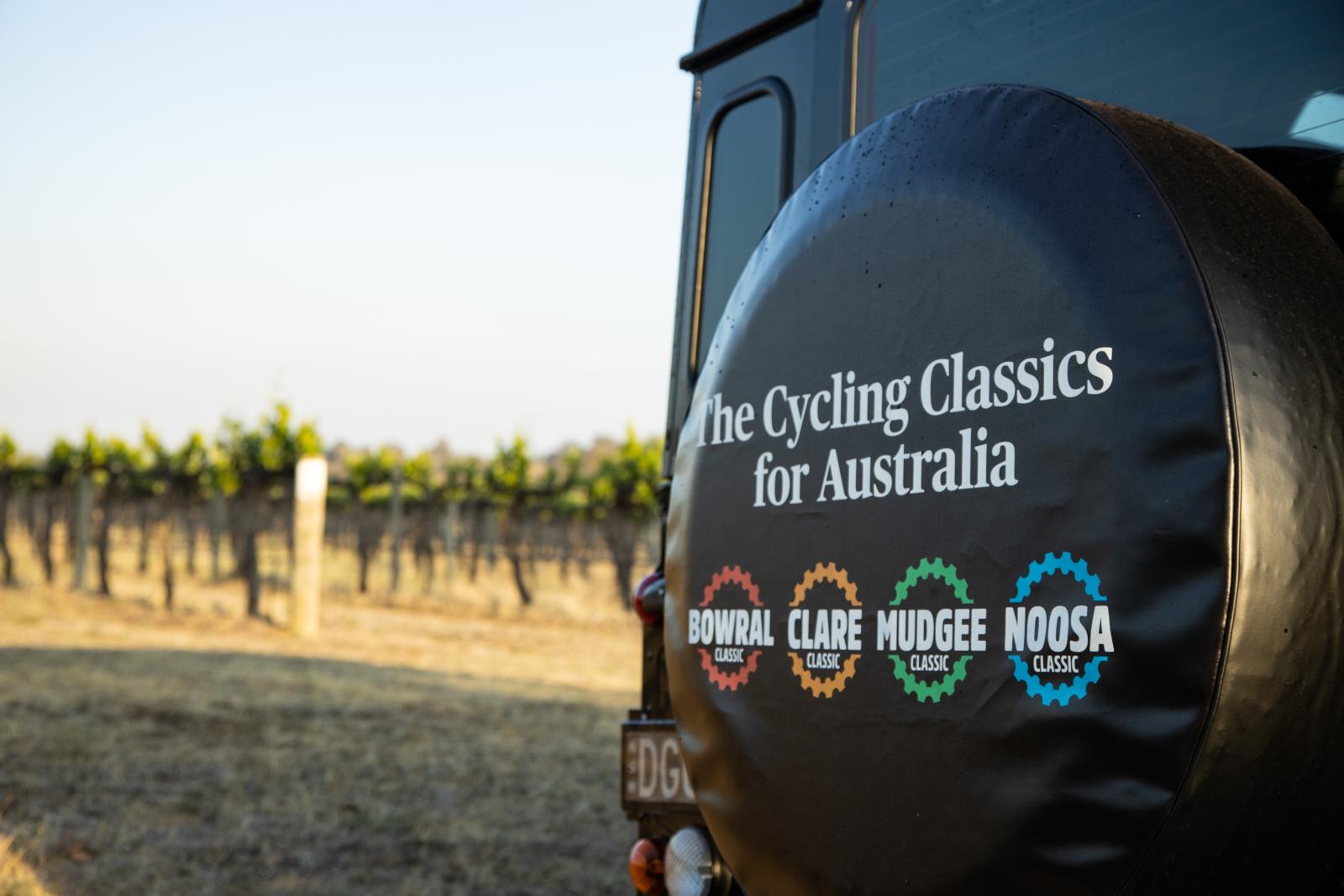
Check your equipment
Well before the Mudgee Classic, you need to check your bike and other equipment. Book your bike in for service at your local bike shop at least a few weeks before so you can ride it before you head to Mudgee. There will be mechanics at the start of the rides and roaming the course, but they are there for emergency repairs only.
Make sure your other essentials are working well. Is your saddle comfortable? Are your knicks doing their job? Do your helmet and shoes fit correctly? And always carry essential repair equipment with you for training and event rides. For the Mudgee Classic, you should carry two spare tubes and the gear to change them.
…Mudgee offers wonderful scenery, lots of rolling hills, and plenty to do when you’re not out on the region’s roads…
RIGHT: The first of many vineyards can be seen (and visited!) just a few kilometres out of town.
More About Mudgee
- Mudgee and its surrounding region is great for a weekend away so make sure you take the time to have a look around before or after the ride.There are plenty of accommodation options from the holiday park and campsites right up to super-luxury boutique hotels, or the tranquillity of a farm-stay. Take a look at visitmudgeeregion.com.au for some great options.
- Mudgee is an attractive and sophisticated country town of fine old buildings, located in the broad, picturesque and fertile Cudgegong River Valley. Surrounded by gently undulating hills, it is noted primarily for more than 40 vineyards and providores, with cafés and restaurants that accompany the vineyards and cellar doors. The area is also known for its fine wool, beef, fat lambs, cereal crops, lucerne, vegetables and honey.
- It is the third-largest grape growing region in NSW. Alongside its award-winning drops, you’ll also discover nature experiences, a cultural hub of activities and plenty of memorable eateries.
- Why not go for an easy ride before and after the event ride, and follow the self-guided cellar door cycling tour meandering from vineyard to vineyard.
- Or book a hot air balloon ride to see Mudgee from above. The early morning sky will reveal views of the iconic vineyards below, as well as the townships of Rylstone, Kandos, Hill End and more. The one-hour sunrise balloon flight is followed by a champagne breakfast back on land.
- Join a kayak tour or hire a paddleboard at Dunns Swamp to wind along the pristine Cudgegong River that cuts its way through the Wollemi National Park. Follow it up with a walk through the park to discover intricately shaped rock faces and diverse wildlife.
- Mudgee also has its own microbrewery housed in a 100-year-old former wool store located in one of the town’s main streets.
- For those who enjoy a little history, follow the Henry Lawson Heritage Trail that covers 15 sites associated with Lawson and his writing. Lawson had very strong ties to the Mudgee-Gulgong district and famously told stories at Mudgee’s Miner’s Arms Hotel and wrote much of his work while living in the area.
